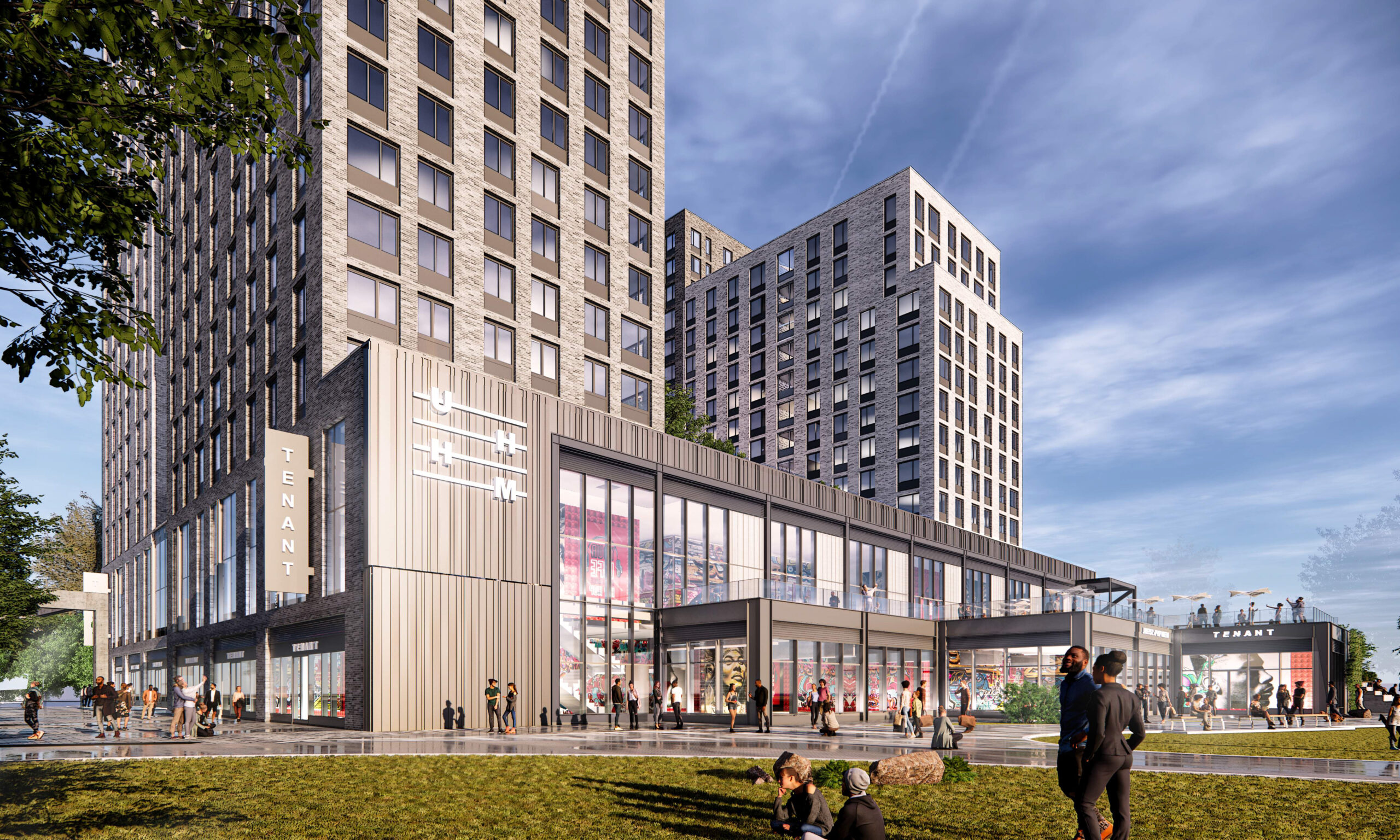Last year, hip hop garnered the highest volume of audio and video streams of any genre — surpassing rock and pop. The genre that is now a global phenomenon originated in the Bronx at a party on Sedgwick Avenue in 1973.
The borough’s role in the creation of hip hop will be eternalized in the new Universal Hip Hop Museum (UHHM) — set to open in 2024. Political officials and hip hop legends, including LL Cool J, Fat Joe and Lil Kim, gathered on May 20 to celebrate the project’s groundbreaking.
The museum is part of a $349 million development called Bronx Point, which is located at 50 East 150th Street in Melrose, on the Harlem River waterfront.
“Hip hop was born in The Bronx, and the inclusion of the Universal Hip Hop Museum as a part of this project will help showcase our role in the creation of that worldwide cultural movement for generations to come,” Rubén Díaz Jr., Bronx borough president, said in a press release.
The project is being developed by L+M Development Partners and Type A Projects and designed by S9 Architecture and Marvel. In addition to the museum, Bronx Point will include educational programming spaces, a 2.8-acre public park and more than 540 affordable housing units.
The future of the museum was not always certain and the institution has endured years of setbacks, according to Rocky Bucano, executive director of UHHM. He said the groundbreaking ceremony signified the achievement of a long-term dream for the founding members of the museum.
“I was extremely pleased and overjoyed to watch it all come to fruition,” Bucano said.
Bucano grew up in the Bronx and began to DJ as a teenager in the early 1970s. He said he never envisioned a global culture developing around his community’s music.
“I had no idea that there would even be a thing called hip hop because what we were doing didn’t have a name,” Bucano said. “It was just spinning music outside in the park, and watching people enjoy being together, having fun and listening to great music.”
Bucano witnessed the evolution of the genre from before it was formally recognized as hip hop. He spent more than 40 years in the music industry working as a club promoter, record label owner and artist manager.
He spent the last decade developing the museum. Bucano said making it a reality was difficult. “There was very little support when we first started the journey,” he explained. “Once people saw that this project started to move in a very positive progressive manner, then the support started to come from city and state funding, and eventually from more practitioners from the culture asking to volunteer their services and participate.”
Growth in support revealed itself in the addition of hip hop icons Nas, LL Cool J and Kurtis Blow to the museum’s advisory board, and donations from corporate sponsors — including Microsoft.
UHHM raised $23 million in the team’s first of five phases of fundraising and continues to gain funding. At the groundbreaking ceremony, Díaz Jr. announced his office would provide $4.2 million in financial contributions to the museum.
Bruce Rivera, a South Bronx native and an organizer of the mutual aid organization Mission Helping Hand, said though the development of Bronx Point is a step in the right direction with the allocation of more funding to projects in the Bronx, “to see it all in one spot probably is not the best way forward.”
“It’s great that we got spotlight on the rappers and it’s great for the Bronx, but how do we turn that into sustainable, long-standing change in our communities where we can uplift and really help each other?” Rivera said.
He said he hopes that Bronx-based grassroots organizations are involved in community programming at Bronx Point.
According to Bucano, UHHM will include programming open to the community such as educational workshops, career fairs and town hall meetings to discuss social justice issues..
“The museum will serve as an arbiter overseeing the culture’s development and growth, giving access to artifacts and memorabilia that documents and celebrates how Black and brown teenagers created something from nothing, becoming a phenomenal, colorful, inclusive art form,” he explained.
In addition to being a cultural monument, Bucano said he hopes the museum will generate an economic resurgence for the Bronx by increasing tourism.
Lorean Valentin, a resident of Mott Haven, said she is curious to see if the development is sustainable for the Bronx community or for the developers.
“Improvements are certainly long overdue all over the borough, however, we cannot ignore the fact that the Bronx is certainly becoming gentrified,” she said. “Many of us feel this is the true motivation for the future infrastructure that is being influenced to build on abandoned or neglected procure city land.”
Valentin said she hopes the developers work with the community. She is a member of Rainbow Garden, a community garden, and a co-founder of Mission Helping Hand. The organization has served more than 400,000 families across the Bronx since the beginning of the pandemic, according to Valentin.
“We lost so many people due to the pandemic and are in dire need of quality employment and resources,” she said. “The last thing the South Bronx needs is another group of developers bringing us higher asthma rates and a promise of no jobs.”
Bucano said he intends to create a greater social impact in the community by connecting with other nonprofit organizations, the local artistic community and neighboring schools.
Besides outreach, there will be student access to the museum and discounted rates for seniors, according to Bucano. He said UHHM will have a standard ticket pricing competitive with other institutions, to ensure that the museum’s existence is sustainable for generations to come.
Until the planned opening of the museum in 2024, UHHM is operating out of the Bronx Terminal Market, where there is currently an exhibit titled “Revolution of Hip Hip” open for viewing. Tickets are available online for $10.

